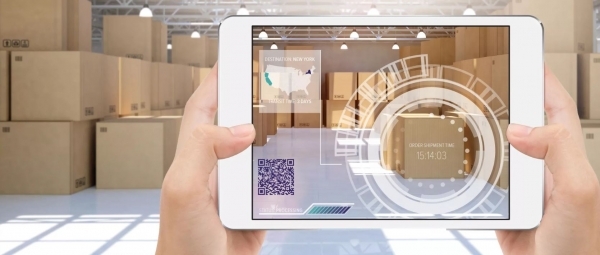
Virtual Reality (VR) and Augmented Reality (AR) were introduced quite some time ago. VR has appeared in various films since the 1990s, including Star Wars, The Matrix, and Total Recall. AR was used for the first time to view Virtual Fixtures developed by Armstrong's Research Lab in the United States Air Force in 1992. Since then, AR technology has been developed and applied to various forms and purposes in games, movies, and everyday life.
If you remember Nintendo's "Pokemon Go" game, which was popular in 2017, it is not hard to understand AR technology. No matter how much development is conducted in a laboratory, if the consumer does not feel the effectiveness of the technology, it cannot move beyond research papers. Due to the popularity of Pokemon Go, AR technology has received explosive attention unlike before. Since then various attempts have been made such as IKEA and Tommy Hilfiger making various attempts to integrate AR experience into marketing, or Epson’s smart glasses for curating museums.
To understand the popularization of AR technology with its various applications and utility values, it is necessary to understand display technology. As you can imagine from the word 'reality', the AR display should provide users with a level of detail that takes the place of or surpasses reality. It must include and be usable for functions including entertainment or information transfer to maintain its system image.
Some technical conditions must be met in order for AR displays to achieve a similar level of an alternate reality to humans who are able to sense movement through real space through their two eyes. The display basically consists of pixels that emit color. In particular, the AR display must be built with a pixel size that cannot be distinguished by human eyesight. The image reproduction speed should be at least 120 Hz so that the reaction speed of the human eye cannot follow. At the present, AR devices or exhibition halls cannot meet the above technical requirements--this is why, even when worn for short periods of time, people experience difficulty due to dizziness or vomiting symptoms.

Various technologies for AR display have been made by various research institutes and companies. A liquid crystal-based microdisplay having a relatively simple pixel structure and a high luminance is difficult to realize at a high resolution due to the limitations of the characteristics of a thin film transistor (TFT) that comes from using a lower substrate as a glass.
Micro-light-emitting diodes (LEDs) are theoretically capable of low-power drive and various forms. Apple, Samsung Electronics and LG Electronics are investing and developing next-generation displays to produce various size displays including AR, VR, and a wearable display. However, micro-LEDs are generally considered to be difficult to commercialize in a short period of time because it is necessary to secure uniformity of electrical-optical characteristics, improve the luminous efficiency of red LEDs, and secure micro-transfer technology for displays.
The organic light emitting diodes (OLEDs), which have achieved great success in small and medium-sized displays, do not require a separate light source. The OLED-based microdisplay is recognized as a promising candidate for AR because of its advantages such as fast response time and thin and light manufacturing capability. Recently developed microdisplays are fabricated on silicon wafers rather than glass substrates for high-resolution implementation.
OLED-based microdisplays are also fabricated on silicon wafers instead of glass substrates and polyimide (PI) substrates. It is called OLEDoS (OLED on Silicon). Kopin, Sony, and Fraunhofer have been continuously developing and publishing OLED-based microdisplays. There are many advantages compared to the technology mentioned above, but there is not enough OLED deposition technology for high resolution enough for AR display. In recent reports, a prototype of 3000ppi has been reported, although it takes a considerable time to commercialize it.
In order to produce high-resolution OLEDoS, a precise pixel-forming technology of several micrometers for OLED deposition is required. In the development of the R & D stage, yield and process consistency issues should be considered when applied to mass production. To solve these problems and commercialize OLEDoS, Korea Electronics and Telecommunications Research Institute (ETRI) is developing displays using white OLED. White OLED is a technology for layering RGB subpixels through the photolithography process of a color filter (CF) after depositing a white OLED on a substrate. Resolution OLEDoS solution.

This technology requires R & D such as optimizing the device structure and developing stable encapsulation so that the characteristics of the OLED device are not affected by the RGB photo process. ETRI succeeded in the development of military green OLEDoS with a color coordinate change (Δu'v ') of 0.009 in the temperature range of minus 45 ° C to 70 ° C, and it was demonstrated at the 2018 SID and IMID conferences.
The development of AR killer apps is thought to be the biggest component of AR market growth, but the development of hardware that can make use of the technology before it is fully completed will be a challenge. The everyday life utilizing AR seen in science fiction movies about 10 years ago is about to become a reality. It is possible to indirectly experience something without being in an actual space and feel as though it were really happening, and the information which was limited in the screen of the computer or smartphone will be out of such space constraints.
The future display is a technology that allows users to overcome limitations of space and time, not just the development of technology. AR is likely to be one platform for future display implementations. R & D should be steadily implemented to minimize the hindrance to users' use value and usage.


